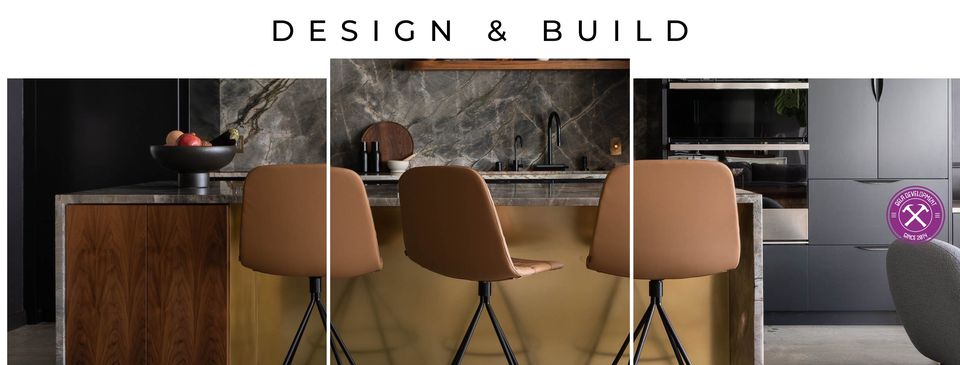Planning a home addition can feel overwhelming, but it doesn’t have to be. In this blog, Bela Development breaks down the 5 essential steps to help you expand your home with confidence. From setting a budget to collaborating with our expert design-build team in Venice, CA, discover how to turn your vision into a seamless, stress-free reality.
Assessing your needs and goals
Before embarking on the journey of a home addition, it’s crucial to take a step back and assess your needs and goals. This initial phase sets the groundwork for the entire project. Begin by asking yourself why you want to expand your home. Are you welcoming a new family member, needing extra space for work, or simply looking to enhance your property’s value? Understanding your motivations will help clarify your vision and ensure that the addition aligns with your long-term aspirations.
Consider the practical aspects of your current living situation. What are the limitations of your existing space? Is your family growing, and do you need more bedrooms? Perhaps you desire a larger kitchen or a dedicated office space. Write down the essential features you want in your addition and prioritize them. This list will serve as a guiding document throughout the planning process, ensuring that your new space meets your expectations and enhances your lifestyle.
Additionally, think about the future. While it’s important to address immediate needs, consider how your requirements may evolve over time. For instance, if you plan to have children in the coming years, a larger living area might be essential. Alternatively, if you envision retirement and want to downsize, focus on creating adaptable spaces that can serve multiple purposes. By taking the time to assess your needs thoroughly, you can create a home addition that truly reflects your family’s lifestyle and future goals.
Setting a budget for your home addition
Once you have a clear understanding of your needs and goals, the next step is to set a realistic budget for your home addition. Establishing a budget is not merely about determining how much money you can allocate; it’s about understanding the scope of your project and the costs associated with it. Start by researching the average costs for similar additions in your area. This will give you a ballpark figure to work with and help you gauge the financial feasibility of your plans.
As you create your budget, consider all aspects of the project, including construction costs, design fees, permits, and any unforeseen expenses that may arise. It’s wise to allocate an additional 10-20% of your budget for contingencies, as home renovations often encounter unexpected challenges. Be transparent about your financial limitations with your design-build team; they can help you make informed decisions that align with your budget while still achieving your vision.
Additionally, explore financing options if you need to borrow money for your home addition. This could include home equity loans, personal loans, or refinancing your mortgage. Understanding your financial landscape will empower you to make choices that are not only aesthetically pleasing but also financially sound. A well-defined budget will guide you through the decision-making process and help you avoid costly mistakes down the line.
Hiring professionals for design and construction
With your needs assessed and a budget in place, the next step is to hire professionals who can bring your vision to life. Finding the right design-build team is crucial for the success of your home addition. Begin by researching local contractors, architects, and designers. Look for those with experience in home additions, as they will be familiar with the unique challenges and requirements involved in expanding a residence.
Check reviews, ask for references, and examine their past projects to gauge their expertise and style. Once you have a shortlist, schedule meetings to discuss your project. This is your opportunity to gauge their communication skills, responsiveness, and ability to understand your vision. A good team will not only have the technical skills but also a collaborative approach that encourages your input throughout the process.
When hiring professionals, be clear about your expectations and ensure they align with your vision and budget. Discuss timelines, materials, and design preferences upfront to prevent misunderstandings later. A well-chosen design-build team will provide valuable insights and suggestions that can enhance your project while keeping you on track. Their expertise will be instrumental in navigating the complexities of your home addition.
Obtaining necessary permits and approvals
Before any construction can begin, it’s essential to navigate the maze of permits and approvals required for your home addition. The permitting process ensures that your project complies with local building codes, zoning laws, and safety regulations. Start by contacting your local building department to understand the specific requirements for your area. This often involves submitting detailed plans and drawings of your proposed addition, which your design team can help prepare.
Be prepared for potential delays as you await approvals. The timeline for obtaining permits can vary significantly depending on your location and the complexity of your project. It’s important to factor this into your overall timeline when planning your addition. Patience is key, as rushing through this process can lead to complications or even fines down the line.
Additionally, consider consulting with your neighbors about your plans. While not always required, keeping them informed can mitigate potential objections and foster goodwill. If your addition may impact their view or light, open communication can go a long way in ensuring a smoother process. Remember, a well-planned permit process not only protects your investment but also contributes to the overall safety and quality of your home.
Planning the layout and design of your home addition
Now that you have your permits in hand, it’s time to focus on the layout and design of your home addition. This step is where your vision truly starts to take shape. Collaborate closely with your design-build team to create a layout that maximizes space while ensuring functionality. Consider how the new addition will flow with the existing structure and how it will be used daily.
Think about the specific features you want in your addition. Do you envision large windows for natural light, an open-concept floor plan, or perhaps built-in storage solutions? Discuss these ideas with your design team, as they can provide insights into what works best in terms of aesthetics and practicality. Sketch out your thoughts and be open to their suggestions, as they may have innovative ideas that enhance your original concept.
It’s also essential to consider how the addition will impact the overall look of your home. Aim for a design that complements the existing architecture while still reflecting your personal style. This might involve selecting similar materials, colors, and finishes to create a cohesive appearance. The goal is to ensure that your addition feels like a natural extension of your home rather than an afterthought. By thoughtfully planning the layout and design, you can create a space that is both beautiful and functional.
Selecting materials and finishes
Once the design is finalized, the next step is to choose the materials and finishes for your home addition. This phase is exciting because it allows you to personalize your space and make it uniquely yours. Start by considering the overall aesthetic you want to achieve. Are you going for a modern look with sleek lines and contemporary finishes, or do you prefer a more traditional appearance with classic materials?
Research different options for flooring, cabinetry, countertops, and fixtures. Each choice you make can significantly impact the overall feel of your addition. For instance, hardwood flooring can add warmth and elegance, while tile might offer durability and ease of maintenance. Similarly, selecting high-quality countertops can elevate the space’s functionality and aesthetic appeal.
Don’t forget to consider sustainability as you choose materials. Opting for eco-friendly options not only benefits the environment but can also enhance your home’s energy efficiency. Discuss these choices with your design-build team, as they can recommend materials that fit your vision and budget while ensuring quality and longevity. Thoughtful selection of materials and finishes is key to creating a space that you’ll love for years to come.
Managing the construction process
As construction begins, effective management of the process is crucial to ensure everything runs smoothly. This is where your design-build team plays a pivotal role. They will coordinate the various aspects of the project, from scheduling subcontractors to overseeing the daily operations on-site. Regular communication with your team will help you stay informed about progress and any challenges that arise.
Establish a timeline for the project, including key milestones and deadlines. While construction often comes with unexpected delays, having a general timeline can help keep everyone accountable and on track. It’s also important to be flexible and patient, as unforeseen issues may require adjustments to the original schedule.
Throughout the construction process, make it a priority to conduct regular site visits. This will allow you to monitor progress, address any concerns, and provide feedback as needed. Maintaining open lines of communication with your design-build team will foster a collaborative environment, ensuring that your vision is realized while adapting to any necessary changes. Effective management during construction can significantly impact the success of your home addition, leading to a final product that exceeds your expectations.
Finalizing the details and finishing touches
As your home addition nears completion, it’s time to focus on the final details and finishing touches that will make the space truly yours. This stage is often the most rewarding, as you see your vision come to life. Begin by assessing the overall appearance and functionality of the space. Are there any adjustments or enhancements you’d like to make? This could involve re-evaluating the layout, adding decorative elements, or incorporating additional storage solutions.
Pay special attention to the finishing touches that will elevate your new space. This includes selecting paint colors, light fixtures, and hardware that align with your aesthetic vision. Think about how each element contributes to the overall ambiance of the room. For instance, choosing warm lighting can create a cozy atmosphere, while brighter options can enhance productivity in a workspace.
Finally, don’t forget to plan for landscaping or exterior enhancements that complement your new addition. This could involve planting trees, adding pathways, or even constructing a deck or patio that extends your living space outdoors. By finalizing these details, you’ll create a cohesive look that integrates your home addition seamlessly into your property. The culmination of all your hard work will be a beautiful, functional space that enhances your home and lifestyle.
Conclusion: Enjoying your new home addition
With the completion of your home addition, it’s time to step back and enjoy the fruits of your labor. This new space is not just an expansion of your home; it represents a significant investment in your family’s future. Take the time to appreciate the enhancements you’ve made, whether it’s a new family room for gatherings, an expanded kitchen for culinary adventures, or a serene office for focused work.
As you settle into your new space, consider how it serves your family’s needs and enhances your daily life. Host gatherings to celebrate your new addition, invite friends and family to experience the changes, and create new memories in your home. This space is designed to enrich your lifestyle, and sharing it with loved ones will make it all the more special.
Finally, remember that homeownership is a journey. Regularly assess how your new addition fits into your evolving needs and be open to future improvements or adjustments. Your home is a reflection of your life, and as your family grows and changes, so too can your space. Embrace the possibilities and enjoy your beautiful new home addition for years to come.




